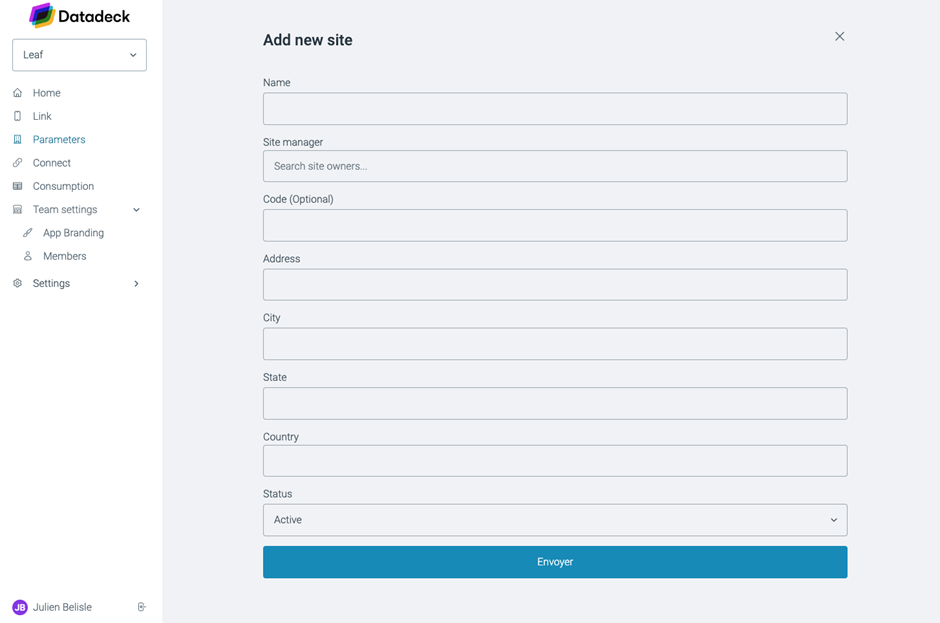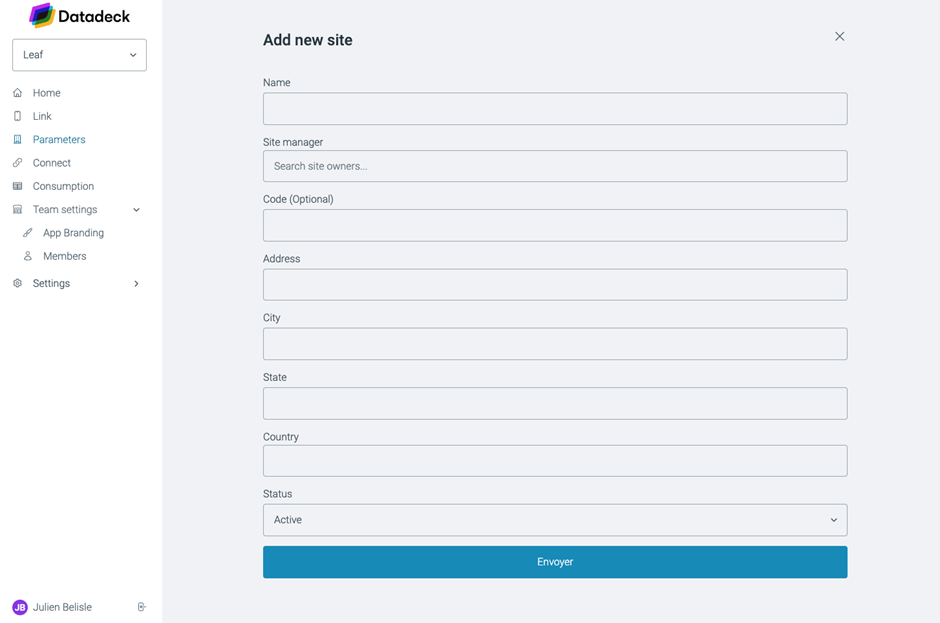Site Configuration
Add sites and setup your Dashboard
Adding sites to your platform can be done individually or in bulk, depending on your needs:
For Individual Sites: Simply click the “Add Site” button to manually enter each site one by one. This method is ideal for adding a small number of sites.
For Bulk Uploads: If you need to add multiple sites at once, our bulk upload feature streamlines this process:
Download the CSV Template: Start by downloading our CSV template. This template ensures that all your site data is correctly formatted for upload.
- Convert and Populate the Template: If necessary, convert the CSV file into an XLS format for easier editing. Then, add your site information following the template’s structure. Ensure each site’s details are accurately filled to prevent any upload issues.
- Re-upload the CSV: Once you've added all your sites to the template and saved your changes, convert it back to CSV format if you've worked in XLS. Finally, upload this CSV file back to the platform. This method allows for efficient management of large-scale site additions, ensuring your platform reflects all your operational sites accurately and comprehensively.


When adding a site to the platform, it's essential to provide specific details to ensure comprehensive management and easy identification. Here’s what you’ll need:
●Site Name: Choose a name using a standardized nomenclature familiar to your team members. This consistency aids in later searching and filtering by site name.
●Site Manager: Assign the individual responsible for connecting and managing utility accounts for the site. If this person doesn't have the required credentials, they can delegate the connection responsibility to an external connection owner (note: external connection owners won’t have dashboard access). If the site manager is not already a platform user, simply enter their email address; they will be invited to create an account.
●Code: (Optional) This unique identifier can be used to further differentiate sites within your business framework.
●Location: Provide the complete address of the site, including city, state, and country. Accurate location details are crucial for regional management and reporting.
●Status: Specify whether the site is currently active or has been closed. This status helps in monitoring and managing site-specific activities.
Updated 6 months ago
